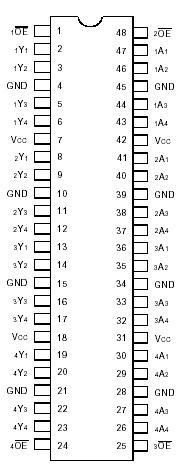IDT74ALVCH162601: Features: • 0.5 MICRON CMOS Technology• Typical tSK(o) (Output Skew) < 250ps• ESD > 2000V per MIL-STD-883, Method 3015; > 200V using machine model (C = 200pF, R = 0)•...
floor Price/Ceiling Price
- Part Number:
- IDT74ALVCH162601
- Supply Ability:
- 5000
Price Break
- Qty
- 1~5000
- Unit Price
- Negotiable
- Processing time
- 15 Days
SeekIC Buyer Protection PLUS - newly updated for 2013!
- Escrow Protection.
- Guaranteed refunds.
- Secure payments.
- Learn more >>
Month Sales
268 Transactions
Payment Methods
All payment methods are secure and covered by SeekIC Buyer Protection PLUS.

 IDT74ALVCH162601 Data Sheet
IDT74ALVCH162601 Data Sheet






